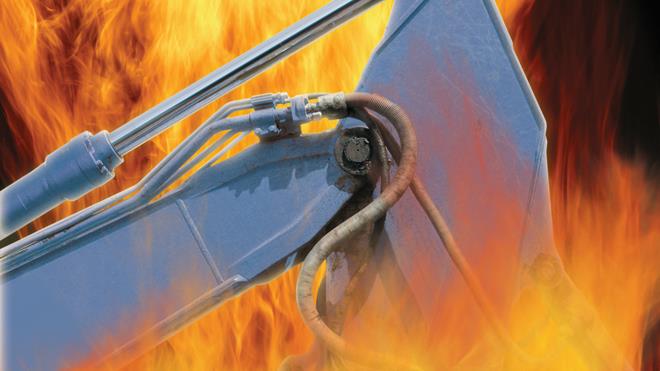
Fire-resistant fluids are most often associated with hydraulic systems. In some of these systems, components must operate at an extremely high temperature, which means you will want to use a fluid that does not ignite easily in the event of a leak. This helps to reduce risk and ensure the safety of plant personnel.
One of the first parameters to consider when assessing the need for a fire-resistant fluid is the operating temperature. This temperature will determine the degree of fire protection required from the fluid in operation. Many lubricants can withstand elevated temperatures, but when you exceed 200 degrees F, your options become limited. This is when a fire-resistance fluid may be used.
The fluid’s flash point and fire point are critical properties to review when selecting a lubricant for a high-temperature area. Both of these properties provide insight into how well the lubricant can resist combustion or fire at elevated temperatures. The flash point is the temperature at which enough lighter hydrocarbon molecules have evaporated and will ignite. At the flash point, the vapors ignite, but the bulk fluid does not, so the fire is not sustained. The fire point is the temperature at which combustion occurs and fire is sustained. The fire point normally is several degrees (50+) higher than the flash point.
It is important to note that just because a lubricant can withstand elevated temperatures without igniting doesn’t mean it will be able to survive for an indefinite period at those temperatures. For this, you must look at the lubricant’s oxidative stability. This property is commonly reported by the lubricant’s rotating pressure vessel oxidation test (RPVOT) value, which gives an indication of how well the fluid will resist oxidation.
Several base oils inherently exhibit many of these essential properties. Various synthetic bases are used in fire-resistant fluids, with the most common being phosphate esters. While these have been popular in the past, there is a new push for soy-based lubricants. These soy-based fluids have the added benefit of being environmentally acceptable and quick to biodegrade if accidentally spilled.
Other fire-resistant bases include diesters and polyalkylene glycols. Some glycols are emulsions that are mixed with water. The water content dramatically improves the oil’s fire resistance but adversely affects the lubricating properties.
Fire-resistant fluids truly make their mark when a leak occurs in a high-temperature area. Hydraulic hoses and piping may fatigue and crack, allowing lubricant to spray out of them. This can cause a fire in a short amount of time. Utilizing a fire-resistant fluid will greatly lower this risk and may even reduce the need for a fire-suppression system.
While fire-resistant fluids can come with a higher price tag, they often make up for it in safety considerations. By selecting the proper fluid, you can ensure safe operation of your equipment without sacrificing the necessary lubricating properties.
